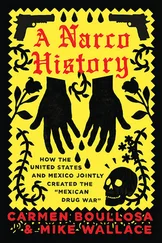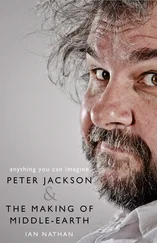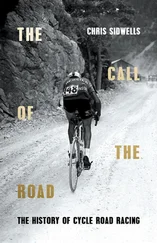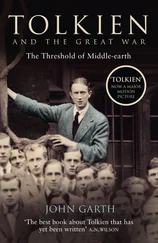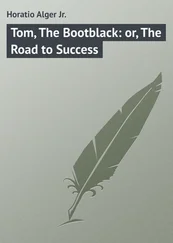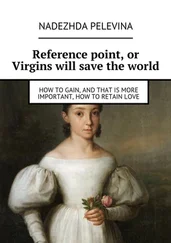This runs as follows:
A man inherited a field in which was an accumulation of old stone, part of an older hall. Of the old stone some had already been used in building the house in which he actually lived, not far from the old house of his fathers. Of the rest he took some and built a tower. But his friends coming perceived at once (without troubling to climb the steps) that these stones had formerly belonged to a more ancient building. So they pushed the tower over, with no little labour, in order to look for hidden carvings … They all said: ‘This tower is most interesting.’ But they also said (after pushing it over): ‘What a muddle it is in!’ And even the man’s own descendants, who might have been expected to consider what he had been about, were heard to murmur: ‘He is such an odd fellow! Imagine using these old stones just to build a nonsensical tower! Why did not he restore the old home? He had no sense of proportion.’ But from the top of that tower the man had been able to look out upon the sea.
Now, as with ‘Leaf by Niggle’, everything in this story can be ‘equated’. ‘The man’ = the Beowulf -poet. The ‘friends’ looking for hidden carvings = the Beowulf -scholars trying to reconstruct history. The ‘tower’ with its view on the sea = Beowulf itself, with its non-scholarly impulse towards pure poetry. More difficult are ‘the accumulation of old stone’, the ‘older hall’ (also ‘the old house of his fathers’), and ‘the house in which he actually lived’. From this one can deduce that Tolkien thought that there had been older poems than Beowulf , pagan ones, in the time of the Christian past already abandoned; they are the ‘older hall’. However debris from them remained available, poetic formulas and indeed stray pagan concepts like the Sigelware ; that is the ‘accumulation of old stone’. Some indeed of this was used for Biblical poems like Exodus , in which the Sigelware figure, part of the new civilisation of Christian Northumbria (or Mercia), the new civilisation being ‘the house’ in which the man ‘actually lived’. Rejected bits were nevertheless used by the poet to build his poem or ‘tower’; and they are pre-eminently the monsters, the dragon, the eotenas and ylfe , ‘elves’ and ‘giants’, words once common but used either not at all or very rarely in the rest of Old English literature.
The gist of this is that no one, friends or descendants or maybe even contemporaries, had understood Beowulf except Tolkien. The work had always been something personal, even freakish, and it took someone with the same instincts to explain it. Sympathy furthermore depended on being a descendant, on living in the same country and beneath the same sky, on speaking the same language – being ‘native to that tongue and land’. This is not the terminology of strict scholarship, though that does not prove the opinion wrong. What it does prove is that Tolkien felt more than continuity with the Beowulf -poet , he felt a virtual identity of motive and of technique. * Nowhere was the identity stronger than over ‘the monsters and the critics’, the latter deeply antipathetic to both of them as Tolkien thought he had proved – the former deeply interesting. But what did the dragon, for instance, mean to the Beowulf-poet? For him, Tolkien argued, dragons might have been very close to the edge of reality; certainly the poet’s pagan ancestors could have thought of dragons as things they might one day have to face. Equally certainly dragons had to the poet not yet become allegorical, as they would to his descendants – the dragon as Leviathan, the devil, ‘that old serpent underground’, etc. Yet even to the poet a dragon could not be mere matter-of-fact. He was indeed phenomenally lucky in his freedom to balance exactly between ‘dragon-as-simple-beast’ and ‘dragon-as-just-allegory’, between pagan and Christian worlds, on a pinpoint of literary artifice and mythic suggestion. One sees why Tolkien insisted on a ‘precise’ kindling point of imagination, a ‘given point’ of ‘fusion’, a ‘pregnant moment of poise’. Knowing exactly when the poem was written was part of knowing its exact literary mode, and that literary mode was the one he himself wanted! But the circumstances of the modern literary world made things much harder for him than for his mighty predecessor and kindred spirit.
‘A dragon is no idle fancy’, wrote Tolkien. ‘Whatever may be his origins, in fact or invention, the dragon in legend is a potent creation of men’s imagination, richer in significance than his barrow is in gold. Even to-day (despite the critics) you may find men … who yet have been caught by the fascination of the worm’ (pp. 257–8). This last sentence is true mainly of Tolkien, whose 1923 poem ‘Iumonna Gold Galdre Bewunden’ is about a dragon-hoard and self-evidently Beowulf -derived. 15 The one before is no doubt true as regards ‘significance’, but smacks of special pleading; Tolkien didn’t want dragons to be symbolic, he wanted them to have a claw still planted on fact (as well as ‘invention’). What did he mean by ‘no idle fancy’? The truth of it is, I think, that Tolkien was very used to scrutinising old texts and drawing from them surprising but rational conclusions about history and language and ancient belief. In the process he developed very strongly a sort of tracker-dog instinct for validity, one which enabled him to say that such and such a word, like éacen or beadurún or *hearwa or éored , was true, even if unrecorded, meaning by ‘true’ a genuine fragment of older civilisation consistent with the others. All his instincts told him that dragons were like that – widespread in Northern legend, found in related languages from Italy to Iceland, deeply embedded in ancient story. 16 Could this mean nothing? He was bound to answer ‘No’, and hardly deterred by the thought that ‘intelligent living people’ would disagree with him. After all, what did they know about butterflies, let alone dragons! Still, though dragons, and balrogs, and Shires, and silmarils were all taking shape in his mind as fiction, and were all simultaneously related to philological fact, he had not at this stage evolved a theory to connect the two. Possibly he never quite managed to make the link.
He had a determined try in ‘On Fairy-Stories’ three years later. However this is Tolkien’s least successful if most discussed piece of argumentative prose. The main reason for its comparative failure, almost certainly, is its lack of a philological core or kernel; Tolkien was talking to, later writing for, an unspecialised audience, and there is some sign that he tried to ‘talk down’ to them. Repeatedly he plays the trick of pretending that fairies are real – they tell ‘human stories’ instead of ‘fairy stories’, they put on plays for men ‘according to abundant records’, and so on. This comes perilously close to whimsy, the pretence that something not true is true to create an air of comic innocence. However, beneath this, and beneath the very strong sense that Tolkien is ‘counterpunching’ to a whole string of modern theories which he did not like (fairies were small, only children liked fairies, Thórr was a nature-myth, etc. etc.), it is just about possible to make out the bones of an argument, or rather of a conviction.
The conviction is that fantasy is not entirely made up. Tolkien was not prepared to say this in so many words to other people, to sceptics, maybe not to himself. That is why he continually equivocated with words like ‘invention’ and ‘no idle fancy’, and also why a good deal of ‘On Fairy-Stories’ is a plea for the power of literary art; this is dignified with the form ‘Sub-Creation’, and to it are ascribed the continuing power of Grimms’ Fairy-Tales , the (partial) success of Macbeth , the very existence of ‘fantasy’ as an art-form – views Tolkien also expressed through yet another neologism, the word and poem ‘Mythopoeia’, eventually to be published in later editions of the collection Tree and Leaf (London: HarperCollins, 1988). Bobbing continually above the surface of these rational and literary opinions, however, are other, more puzzling statements. By ‘fantasy’ Tolkien declared (with a long haggle over the inadequacies of the OED and S. T. Coleridge), he meant first ‘the Sub-creative Art in itself’, but second ‘a quality of strangeness and wonder in the Expression, derived from the Image’. The last phrase is the critical one, for it implies that the ‘Image’ was there before anyone derived any expression from it at all. The same implication lurks in Tolkien’s own autobiographical statement, à propos of dragons, that ‘Fantasy, the making or glimpsing of Otherworlds, was the heart of the desire of Faërie’. Making up dragons is Art; ‘glimpsing’ them and the worlds they come from is not. Tolkien would not let ‘fantasy’ mean either the one (rational) or the other (mystic) activity, but kept hinting it was both. He does so particularly, through the whole of the essay, with the idea of ‘elves’: these, he insists, may be (1) ‘creations of Man’s mind’, which is what nearly everybody thinks, or (2) true, i.e. they ‘really exist independently of our tales about them’. But (3) the essence of their activity even as ‘creations of Man’s mind’ is that they are also creators, supreme illusionists, capable of luring mortals away, by their beauty, to the ‘elf-hills’ from which they will dazedly emerge centuries later, unaware of the passage of time. They form an image, a true image, of the ‘elvish craft’ of fantasy itself; stories about them are man-made fantasies about independent fantasts.
Читать дальше

